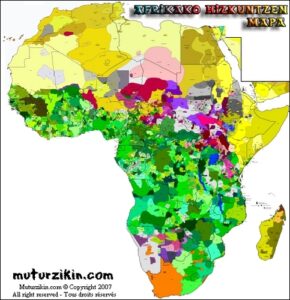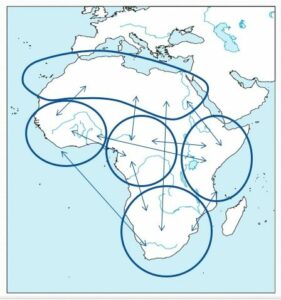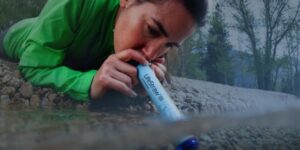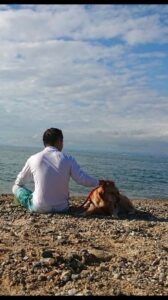Total Plan of Structural Transformation for Eradicating Conflicts in Africa
TRANSCEND MEMBERS, 13 Jan 2020
Daisuke Nojima – TRANSCEND Media Service
7 Jan 2020 – Japanese people are notorious for being un-creative and un-imaginable, for example, school education doesn’t encourage expressing student’s own idea, despite recent efforts of improvement through introducing the pedagogy of international education. However, they are allowed to open their own dream on the third day of a new year, under very special generous atmosphere; this custom is called “Hatsu Yume (first dream of the year).”
Usually people would dream a dream on the second night of a new year, in order to forecast fortune of the year, and would talk its content to family and friends. And, “Yume” also means ideal future plan of a person. So, let me indicate my own idea of solution for major conflicts in African continent. Here is simply a “Yume” also, if you might regard this as too unrealistic or just dreamy, please be generous. However, this plan for transformation of Africa depends on my own presentation and discussion at European Peace University, including students from the continent, with learnings at “African Resources and Obstacles for Peace,” EPU course, organized by Prof. Farai Maguwu and the students, summer, 2008.
- Diagnosis
With many practical researches of a conflict in the region, Africa has these root factors of the conflicts:
-Contradiction between 54-55 states and fragmentized 300 ethnic groups beyond state borders
-Contradiction between modern politics and traditional society
-Colonization and neo-colonization by West and others
-Natural resources (oil, diamond, gold, etc.) and the difficulty of its fair distribution
-Natural environment (river, mountain, animal, plant, etc.) and the difficulty of protection
-Contradiction among: militias, fragile state governments, and weak African Union
-Contradiction between military and government of intra-state
-Serious poverty, mal-nutrition, starvation, and diseases
-Over and increasing of population
-Unsettled education for children
-Gender gaps and patriarchy
-International intervention by other stakeholders of intra-Africa
-International intervention from outside Africa, especially power states; US, France, China, etc.
The conflict cases in Africa happen in the same scenario. Typical pattern of a conflict in Africa reveals like this shape: Contradiction between ethnicity and state → Unstable sovereign-state → Militarized government → Natural resource is found → Foreign intervention by intra-Africa stakeholders → Militia coming → Civil war → Links with anti-government movement → Intervention by out-Africa powers → International conflicts → Refugees and IDP → Establishing a nation-state, but instable → Contradiction between ethnicity and state →…… (endless)
If a conflict seems to be improved, it would be a start of a new conflict. For example, building a state causes uprising of an ethnic group, which has been fragmentized into another state. Therefore, total transformation of the social structure is needed, in order to control this chained story.
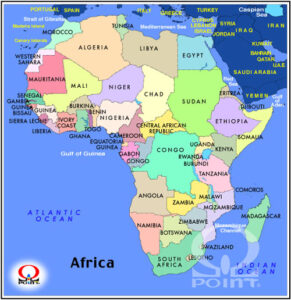 < Contradiction between 300+ Ethnicities and 54-55 States, by the Berlin power game 1884-85>
< Contradiction between 300+ Ethnicities and 54-55 States, by the Berlin power game 1884-85>
- Prognosis
The chained pattern of conflicts would be never-ending.
<Goals: From Violence into Peace, searching the remedies in this framework>
1: Direct Violence (armed conflict, torture, etc.)
⇒ Direct Peace (Controlling and stopping war/ civil war/ massacre/ torture, in any reason)
2: Structural violence (trace of colonization, unstable sovereign-states, unnatural state border, rich-poor gap in/out Africa, lack of BHN, over-cropping for earning money, etc.)
⇒ Structural Peace (Ensuring BHNs for all African people, through establishing a fair system)
3: Cultural violence (Historical trauma, gender bias, child soldiers, etc.)
⇒ Cultural Peace (Education, for positive co-existence and co-understanding)
And there are still positive potentials and possibilities in Africa:
-No nuclear weapons! (Anti-nuclear treaty)
-No superpower! (No hegemonic existence)
-Strong people’s power! (Physical individual strength, and large population)
-Rich resources and natural energy! (Including reproductive ones, heritage for future generation)
-Huge numbers of the states! (If integrated, very powerful and effective, for example, at voting at an international organization)
-Traditional wisdom of conflict resolution
-Experience of successful international organizations, for example, ECOWAS!
-Excellent humanitarian NGOs!
The prescription could be formed through developing combination or totalizing of the above good factors, or the solution would be constructed embedding on them.
- Prescription
I. Basic strategy for Deep Solution
- Ensuring individual minimum QOL (quality of life) will bring peace, in the long perspective
- Prioritizing BHNs. (importance of agriculture for self-supply)
- Respecting for spontaneous development from inside Africa
- Unifying trade, security, and negotiation
- Building sustainable society with appropriate technology
- Reforming sovereign-states system, corresponding with ethnicities
- Sharing natural resource and energy, fairly, depending on SDGs
- Controlling and integrating diplomacy with outside Africa powers
II. Five Regional con-federated states in Africa
Transformation: Building 5 regional federation consists of un-fragmentized ethnic groups (Northern, Western, Central, Eastern, and Southern Africa), and a Con-federation of Africa.
・Every regional federation fairy possesses natural resources (Oil, diamond, gold, etc.) is arranged.
・Trade is encouraged among each other, not internationally.
・Every regional federation has a democratic government, constructed and monitored by the United Nations
・Every ethnic group joins to one region, un-separately.
・Individual person becomes a citizen member of the regional federation. (The present state government is weakened.)
・Individual person has three voting rights (political party, religion, and ethnicity or religious entity) in election, under the principle of gender equality; which forms reginal federation government.
III. African Union (AU), as a more integrated inter-Africa organization:
・Monopolizing unified diplomacy with outside Africa, especially at negotiation with power states (US, France, China, etc.) and other international organizations. (AU diplomacy center)
・Adjusting the fairness among the regional federation (AU Fair center)
・Supervising all international trades, and BHN-prioritizing activities (AU Economic Council).
・Ensuring common security and promoting disarmament and de-armament (AFROPOL).
・Nominating and preserving of Africa’s common heritage and peace education (A-ESCO)
・Produces common items for security, and for AU’s own finance and creating peace business (AU Human Security Factory Center; This also stimulates local industry)
<Additional proposal: Examples of the AUHSFC products>
1) Violent automobile stopper (against militia)
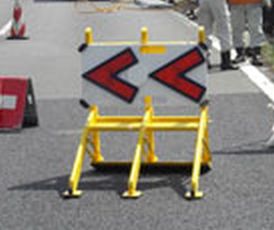
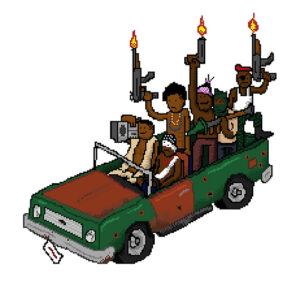 This equipments captures and holds the tires up; with thousands around the city central zone, people should be safer, at least earn time for evacuation. (Hinted by a Japanese police’s production)
This equipments captures and holds the tires up; with thousands around the city central zone, people should be safer, at least earn time for evacuation. (Hinted by a Japanese police’s production)
2) Life straw (cleansing polluted water)
In the forest or camp, people should earn clear water. (Already produced, and should become unexpensive at mass production.)
3) Anti-knife shirt (in case of civil massacre)
With this shirt, people would be survived in case. (Hinted by a Japanese police’s production)
4) Anti-personnel landmine sweeper
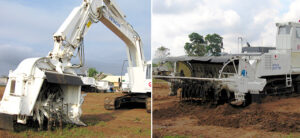 Already activated, and should become unexpensive at mass production.
Already activated, and should become unexpensive at mass production.
5) Gravity electric generator
Already produced, generate electricity simple by holding weight up.
IV. Principles of Encouraging 4 Micro-s: for spontaneous development (development from inside)
1) Micro Credit: Supporting small industries all over Africa
2) Micro Trade: Activating fair-trade between 5 regions intra-Africa, via local workers; not with outside Africa
3) Micro Craft: Encouraging of handicraft, home industry to make self-sufficient goods
4) Micro Aid; through a family bond: African family= family at Advanced country; aid in micro-needs and demands
<Additional Proposal: Examples of “Micro Aid”>
<Afterword>
If this Hatsu Yume vision could only a skeleton of the transformation idea, however I believe this is worth examined. Recent power states seem to act in 19 century in history; buying Global South and fighting in South, under the state vs state context. It is very difficult to control powers; however, the counter-plan in 21st century could be, setting and dressing up into: “no place in the world for their intervention,” strengthening the South.
Thanks for reading my strange dream till end; how the year 2020 could be…?
Hanai, http://eight-guard.com/
Car View, http://www.carview.co.jp/newrs/0/61648
Flickr, https://www.flickr.com/photos/flavioherrera/4476555683
CNN, http://edition.cnn.com/2013/12/06/world/africa/central-african-republic-unrest/index.html
Lifestraw, http://lifestraw.com/products/lifestraw/
Nikken, http://www.nikkenmfg.com/mine/demining/function/index.html
Success Planing, http://www.kyotonishijin-yoroi.jp/
Idea International, http://idea-in.com/?pg=product_detail&am=02190759
Askul, http://www.askul.co.jp/
Sato Cooperation, http://www.ureruzo.com/ge.htm
Zen-ei Cooperation, http://www.protectpeople.net/dosimeter/abc_guigercounter.php
Map of Africa, muturzikin.com and free materials
Sekaishi Shouyou, http://sekaisi-syoyou.blogspot.jp/2014/06/8.html
Gravitylight https://deciwatt.global/gravitylight
___________________________________________________________
 Daisuke Nojima is a TRANSCEND member from Japan.
Daisuke Nojima is a TRANSCEND member from Japan.
Tags: Africa, Conflict Mediation, Conflict Resolution, Conflict Transformation
This article originally appeared on Transcend Media Service (TMS) on 13 Jan 2020.
Anticopyright: Editorials and articles originated on TMS may be freely reprinted, disseminated, translated and used as background material, provided an acknowledgement and link to the source, TMS: Total Plan of Structural Transformation for Eradicating Conflicts in Africa, is included. Thank you.
If you enjoyed this article, please donate to TMS to join the growing list of TMS Supporters.

This work is licensed under a CC BY-NC 4.0 License.
